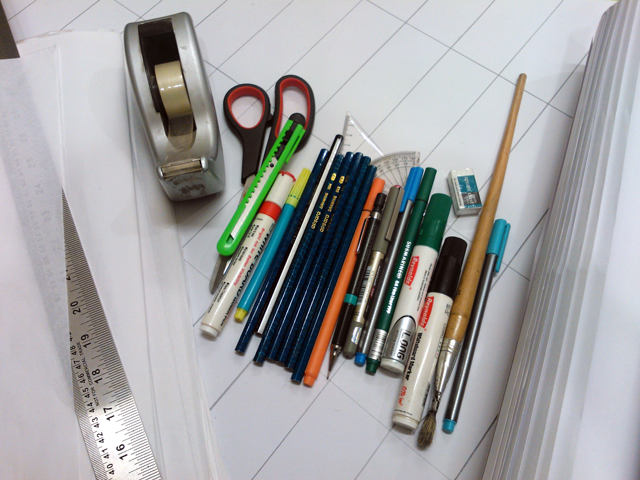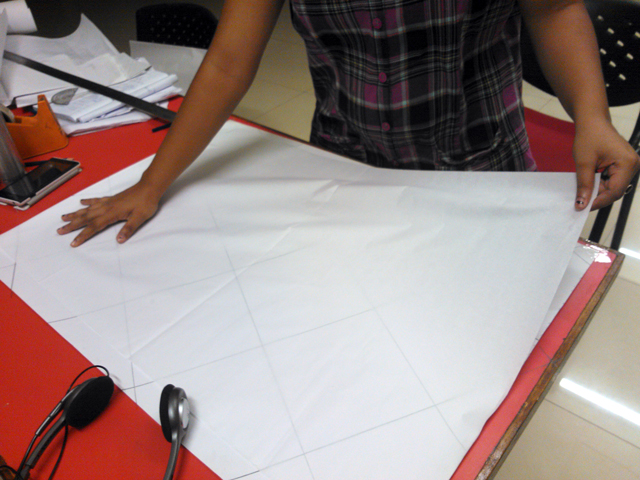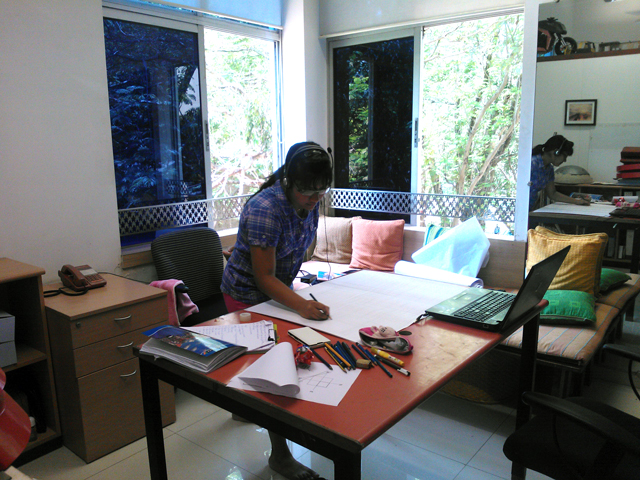1. Objectives of this course:
1. To develop abilities to sketch 3D objects in perspective and that too fluently without conscious and continuous attention to the act of sketching.
2. Make sketching a routine act like walking, driving and swimming. While sketching, you would be able to think of many ideas and talk about them without affecting the sketch itself.
3. Ability to develop sketch in response to the ideas from your mind, developing sketching to match the speed of thinking process.
[Read more...Using Freehand Sketching to think]
2. Structure of each session
You can never achieve quality skills without extensive hard work and practice. All sportsmen and musicians know it. So, the idea of structured sessions is notional, more from the point of delivering these contents in a designed sequence than developing competence. Each session will be of 2.30 hrs, divided as follows:
1. First 15 minutes - Warm up
2. Next 45 minutes - Workout
3. Last 90 minutes - Developing feel of Perspective
There will be 8 sessions included in the course. Those with a reasonable level of competence at the beginning would be able to complete the sessions faster while others may require more time and practice.
Note: Practicing these assignments can be boring. It is not easy to keep the motivation high. It is better to have a partner with you so that you can motivate each other.
3. Preparation
(a) Materials:

Image 0.1: Paper and Stationery
1. Paper: Cartridge paper (available size 710mm x 560mm approx.) - about 30 sheets,
Tracing paper (available size 750mm x 500mm approx.) - about 300 sheets, and
Regular Newsprint sheets - about 150 sheets.
Card Paper/ Mountboard or any other stiff paper (A4 size) - 1 sheet, to create a Shroud for practice, on Day 13
2. Pencils: 2H, H, HB, 2B, 6B
3. Paint brushes: Sizes 1, 6 and 12
4. Pens: We recommend that you practice with Technical Pens (such as the Rapidograph) of Nib Sizes 0.2, 0.3, 0.4, 0.6, 0.8) for better practice. Otherwise, use a Micro tip pen. White board Markers and/or Chalks will be needed additionally on Day 21, when we specifically practice drawing on large surfaces.
5. Sketchpens: Regular set
6. Geometry instruments: Measuring Ruler, Protractor, Compass, Set squares (pref. large sizes, to aid drawing of grids). A Long ruler will be very useful.
6. Additional items: Cello tape/Tacks, Rubberbands, etc.
Note: The tracing sheets will be used as overlays on the grids you will be preparing for the Workouts, as shown in the image 0.2 below. Draw the grid lines on cartridge paper prominently, i.e. with good contrast to ensure they are seen through the tracing sheet.

Image 0.2: Setting up a tracing sheet overlay over a grid
(b) Supporting items:

Image 0.3: Set up for a Practice Session
1. Screen based support:
The sessions are extensively supported by videos. You can download them and watch them on your computer screen to compare your line quality and hand actions
2. Music:
The key is to have a distinct beat that gives you a rhythm to move your hand and body, similar to the tracks used during aerobics work-out sessions. Setting a playlist having good variation of fast and slow tracks will be especially useful for certain workouts that involve change in speed of drawing.
3. Grids:
Grid Template References have been provided at appropriate places that you will need as underlays for sketching. Download and draft them on cartridge paper, using the dimensions given in each grid.
4. Space:
Ample space around to move freely and a reasonably sized table to fix large grids and tracing sheets securely while sketching is essential. An adjustable drafting board is a bonus!
5. Time-keeping:
Also, keep any time-keeping device/timer/alarm clock on your mobile phone handy to remind yourself to switch between the Warm ups, Workouts and Perspective sections.